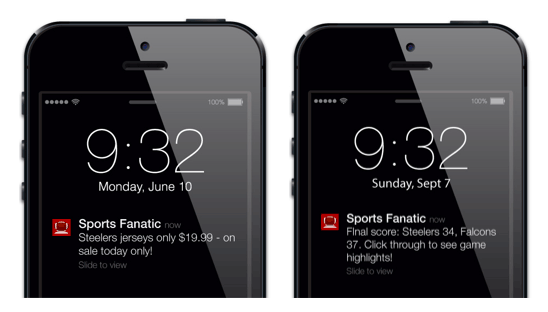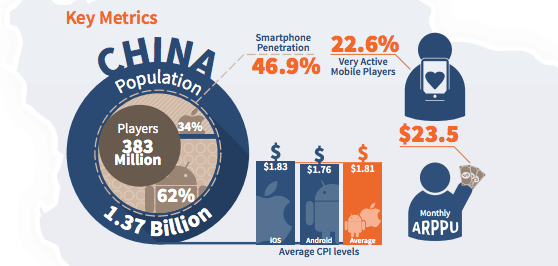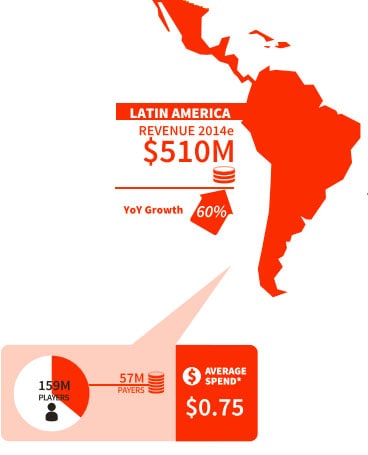Welcome back to our Mobile Industry Exposed Interview series! Data privacy and data security are becoming a high priority for the mobile marketing ecosystem. To get a better understanding of how it is changing the industry and what challenges lie ahead for advertisers, we spoke with Saira Nayak, Chief Privacy Officer (CPO) at TUNE. Among other things, we discussed the difference between US and European privacy laws and the need for companies to gain the trust of end users through education and simplified disclosures.Saira is Chief Privacy Officer at TUNE, leading the company’s external outreach on privacy and data protection matters, and ensuring TUNE’s compliance with global privacy requirements.Saira, a San Francisco native, has over 15 years of legal experience in antitrust, intellectual property, privacy and data security matters. Before TUNE, she was Director of Policy at TRUSTe, where she defined the company’s external policy platform, and advised on TRUSTe’s privacy management solutions. Prior to TRUSTe, Saira worked in-house at the Microsoft Corporation, where she counseled product groups on compliance with Microsoft’s antitrust consent decree with the US government, as well as privacy and data security issues.Saira formerly served as Antitrust Counsel for the National Association of Attorneys General (“NAAG”) and worked with state Attorneys General and their staff on a number of antitrust and consumer protection investigations. She also practiced at Dickstein Shapiro (Washington, DC), where she counseled clients such as HBO, Pfizer, and the Recording Industry Association of America.
I’m sure you’ve heard the rumors about push notifications: that they’re spammy, un-engaging, and a nuisance to app users.
The rumors are true – that is, if you’re bombarding your users with irrelevant, constant and broadcast-to-all messages.
But like all good marketing, push notifications only work when they’re valuable to the end user. When a user has opted-in to receive push messages from your app, it means they are saying “yes” to receiving real-time alerts on offers, content and information relevant to their interests and needs.
We’ve found that 52% of people enable push on their smartphones, and that push has the ability to drive 88% more app launches and 3x higher retention. But broadcast push messages only have a 15% conversion rate, whereas segmented messages have a whopping 54% conversion rate.
The key to providing value through push is to create and run targeted campaigns based on user behavior, attributes and preferences.
In this post, we walk you through the five steps you can take to delight your users with personalized and powerful push messages.
What is your first day retention rate? I’m continually surprised by how few people I speak to know this number for their own apps.
Last year, Tapstream dug into a large set of its data (ignoring apps above one million daily active users) and looked at app retention rates for a sample month in 2013 then again the same month in 2014. Average first day retention in 2013 was 25% then it fell to only 15% in May 2014. Not only is it difficult to acquire users, but it’s also becoming much more difficult to keep them.
On the web, it’s routine to send ad clicks to custom landing pages with content geared towards the referring advertisement; in fact, it’s the defacto standard. We know it increases conversions and has a higher degree of success than sending clicks to our homepage. If this is the optimal strategy on the web, why aren’t we doing the same thing with our CPI campaigns on mobile?
Learn more about why you should be incorporating this unique mobile advertising optimization technique.
As the second largest economy in the world (and one of the fastest growing), China offers a huge opportunity for many app developers. But it’s easy to miss certain quirks of the Chinese app ecosystem. In this post, I’ll dig into the essential—but often ignored—facts that every developer should know before tackling the Chinese mobile app market.
Mobile Dominates The Chinese Internet.
Like many developing countries, China has more and more mobile-only internet users. China’s overall internet penetration will reach 49.3% this year, with mobile internet usage surpassing that of PCs. According to 2014 data from the state-affiliated China Network Information Center, 83.4% of Chinese web users access the internet through mobile devices, while 80.9% do so via PC.
Welcome back to our Mobile Industry Exposed interview series! Privacy is a paramount topic for us at AppLift, and, this time around, we spoke with Christoph Bauer, CEO and founder of ePrivacy GmbH. We talked about the importance of data protection and privacy compliance. In particular, we touched upon the difference between US and European privacy laws, the need to respect consumers’ privacy, as well as the benefits of privacy by design for new products.
Christoph Bauer is the Founder and CEO of ePrivacy GmbH, which conducts certifications on data protection for digital products and companies and offers privacy related consulting. Among other things, ePrivacy runs the well-known ePrivacy seal in Germany and in the EU. Christoph Bauer has over 20 years of experience in the media industry as CFO and COO of larger companies such as AOL and Wunderloop, where he also developed the fields of data protection. He has substantive experience with data privacy seals, such as the ULD, EuroPriSe and ePrivacy seal which comply with the high standards of German and European data privacy regulations. He is an accredited auditor at ULD for the data privacy seal and for ISO 27001 (Information Security Management) and teaches as Professor at the HSBA in Hamburg.
Welcome back to our Mobile Industry Exposed interview series! This time we had the pleasure of speaking with Brian Suthoff, co-founder and CSO of Localytics, to discuss the benefits of using marketing technologies on mobile as well as the importance of nurturing your user base and pampering your most loyal users. We also touched upon the value of app metrics and analytics for real-time remarketing.
Brian Suthoff is a Localytics Co-Founder and Chief Strategy Officer, overseeing strategic alliance partners and long term platform strategy. Brian has been working in mobile since 2000 in a diverse range of technology companies, including data networking, performance management, and advertising. Before Localytics, Brian held senior roles in Business Development and Product Management at startups and Fortune 1000 companies, such as Third Screen Media (now AOL), Alcatel, Newbridge Networks, and Sprint. Brian has an MBA from The George Washington University School of Business and earned his B.S. in Business Administration from Rockhurst University.
중국의 만리방화벽 (만리장성 방화벽의 줄임말로서, 공산당 일당체제의 안정을 위해 중국 정부에서 구축한 인터넷 방화벽 시스템)은 온라인와 모바일 시장의 큰 과제입니다. 최근 앱리프트의 공동창립자이자 CEO인 팀코스첼라(Tim Koschella)는 ExchangeWire에 중국방화벽으로 인한 RTB (실시간경매) 어려움과 같은 아시아 시장에 관련한 인터뷰를 했습니다. 그리고 인벤토리의 세분화, 정부의 트래픽 통제 대해서도 그에 생각을 덧붙였습니다.
The Great Firewall of China is a great challenge for both online and mobile market players. Our CEO and Co-Founder, Tim Koschella, recently sat down with ExchangeWire to discuss Asian-specific issues such as the Chinese Firewall, which causes longer bid responses in RTB traffic. He also touched on other topics, such as the fragmentation of inventories, ‘artificial barriers’ and government-imposed limits on traffic.
Last year, we published the Global Mobile Games Landscape and highlighted the true potential of emerging mobile markets. We also dedicated a special series to Asia Pacific, ‘The Asian Beat’, to dig deeper and uncover both similarities and differences within the region and help developers and mobile marketers guide their go to-market strategies.
Most recently, Latin America has been drawing more and more attention, positioning itself in the global mobile marketing spotlight. Among recent changes: improved infrastructures, increased smartphone penetration and the rise of cheap mobile data.
In a recent report, eMarketer highlighted the growth of the mobile landscape in Latin America. In 2014, 20% of the population owned a smartphone on the continent. By the end of 2015, this figure should be 25%, and, by 2018, it will be a full third. Latin America is proving to be a strong contender in the mobile global app opportunity, expanding beyond borders and app verticals.
These important developments led us to put together the top 10 tips on why and how to invest in LatAm. To get a more in-depth understanding, we sat down with two experts in the region:(Patricio D’Amato, CMO of Recarga, as well as our very own VP International Hugo Gersanois), to get a better feel of what makes this region different and why is it worth considering and how you can adapt your go to market strategy.
AppLift recently announced the acquisition of Bidstalk, an enterprise DSP provider with some amazing technological capabilities, thereby adding another important ingredient to our demand stack. This evolution didn’t come in a day, but was rather the result of our market vision and our understanding of the future of adtech (advertising technology) and martech (marketing technology, solutions enabling you to manage your existing customer base).
Here I would like to give a bit more background on one of the main reasons why it was important for us to invest in a programmatic DSP with RTB capabilities and, having spent years on both the demand as well as the supply side, explain how I see the industry evolving forward.









